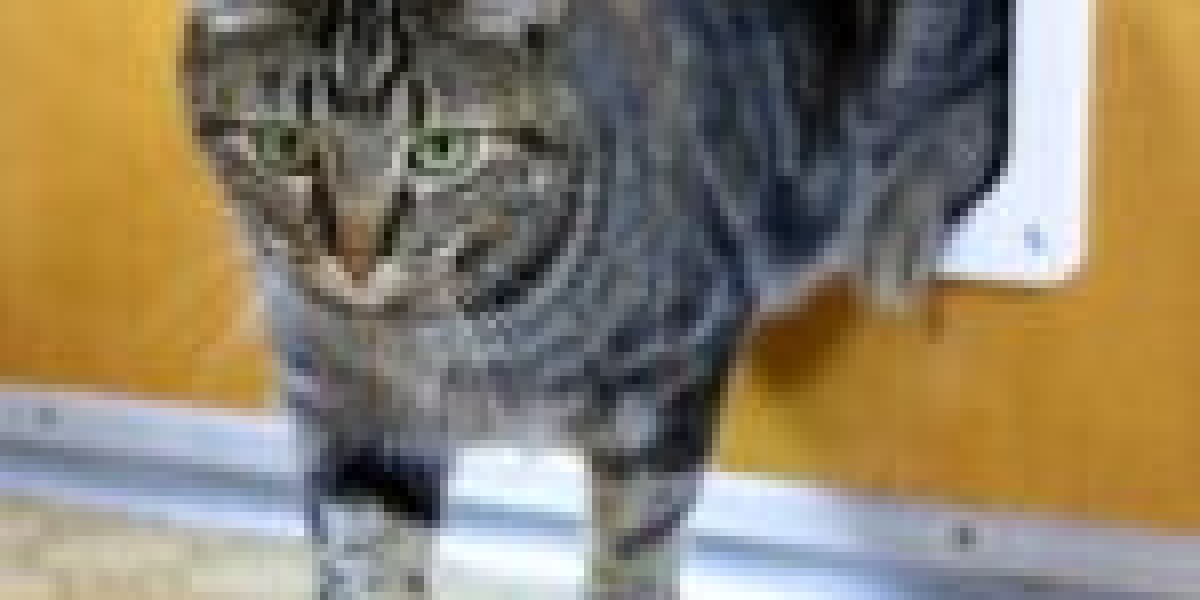The Ultimate Guide to Cat Flap Replacement: Why, When, and How

As a cat owner, it's important to supply your feline buddy with a comfortable and convenient way to enter and exit your home. A cat flap, also referred to as a cat door, is an easy and efficient service that allows your cat to come and go as it pleases. However, like any other household product, cat flaps can wear in time, needing replacement. In this short article, we'll explore the reasons that cat flap replacement is essential, the indications that show it's time for a brand-new one, and a step-by-step guide on how to replace a cat flap.
Why Replace a cat door contractor Flap?
There are a number of reasons that cat flap replacement is required:
- Wear and tear: Cat flaps undergo consistent use, which can lead to wear and tear on the hinges, seals, and other moving parts.
- Weather damage: Exposure to rain, snow, and severe temperatures can trigger the cat flap to weaken, leading to water leaks and drafts.
- Pest control: Old or damaged cat flaps can offer an entry point for unwanted bugs, such as rodents, birds, or insects.
- Energy performance: A brand-new cat flap can help lower heat loss and energy usage, making your home more energy-efficient.
- Enhanced security: Modern cat flaps often feature sophisticated security functions, such as lockable doors and magnetic cat flap installation seals, to prevent unapproved entry.
Indications that Indicate it's Time for a New Cat Flap
If you see any of the following indications, it's likely that your cat flap needs to be changed:
- Leaks and drafts: If you see water or air leaking through the cat flap, it's time to consider a brand-new one.
- Difficulty opening or closing: If the cat flap becomes stuck or difficult to open or close, it's likely that the hinges or seals are worn.
- Noise: If the cat flap makes extreme sound when opening or closing, it might be an indication that the moving parts are used out.
- Bug infestation: If you discover bugs entering your home through the cat flap, it's time to replace it with a brand-new one.
How to Replace a Cat Flap: A Step-by-Step Guide
Changing a cat flap is a reasonably basic DIY task that can be completed with basic tools and materials. Here's a step-by-step guide:
Materials needed:
- A brand-new cat flap
- Screwdriver or drill
- Measuring tape
- Pencil or marker
- Wood screws (if needed)
- Weatherstripping (if essential)
Instructions:
- Measure the existing cat flap: Measure the width and height of the existing cat flap to ensure that the brand-new one fits completely.
- Get rid of the old cat flap: Use a screwdriver or drill to eliminate the screws holding the old cat flap in place. Gently pry the cat flap out of the door or wall.
- Tidy the area: Clean the location around the old cat flap to remove any particles or dirt.
- Mark the position of the brand-new cat flap: Use a pencil or marker to mark the position of the brand-new cat flap on the door or wall.
- Drill pilot holes: Drill pilot holes for the screws that will hold the new cat flap in location.
- Set up the brand-new cat flap: Insert the new cat door for patio door flap into the door or wall and screw it into location.
- Add weatherstripping (if needed): Apply weatherstripping around the edges of the cat flap repair flap to prevent drafts and leaks.
Advice:
- Choose a cat flap that appropriates for your cat's size and type.
- Think about a cat flap with sophisticated security features, such as lockable doors and magnetic seals.
- Use a level to guarantee that the cat flap is installed directly and level.
- Check the cat flap before installing it to make sure that it works efficiently and silently.
Regularly Asked Questions:
- Q: How long does it require to replace a cat flap?A: The time it takes to change a cat flap depends upon the complexity of the task and the individual's DIY skills. Usually, it takes about 30 minutes to an hour to finish the task.
- Q: Can I replace a cat flap myself?A: Yes, replacing a cat flap is a reasonably easy DIY task that can be completed with fundamental tools and materials. Nevertheless, if you're not comfy with DIY projects, it's advised to work with a professional.
- Q: How frequently should I replace my cat flap?A: The frequency of replacing a cat flap depends on usage and weather condition conditions. On average, a cat flap ought to be replaced every 5-7 years.
- Q: What are the benefits of a new cat flap?A: A brand-new cat flap can improve energy effectiveness, security, and comfort for your cat. It can also minimize sound and avoid pest infestation.
Conclusion:
Replacing a cat flap is a basic and vital task that can improve the convenience and benefit of your feline pal. By following the step-by-step guide laid out in this short article, you can quickly change your old cat flap with a brand-new one. Remember to select a cat flap that appropriates for your cat's size and type, and think about advanced security functions to prevent unapproved entry.
Extra Resources:
- Best Cat Flaps for Energy Efficiency: [link]
- How to Choose the Right Cat Flap: [link]
- Do It Yourself Cat Flap Installation Tips: [link]
By offering your cat with a comfy and convenient method to get in and leave your home, you can enhance its overall health and joy. Keep in mind to change your cat flap every 5-7 years to ensure that it stays in good working condition.








